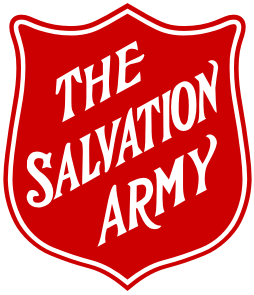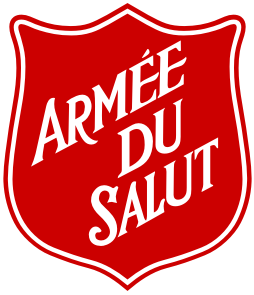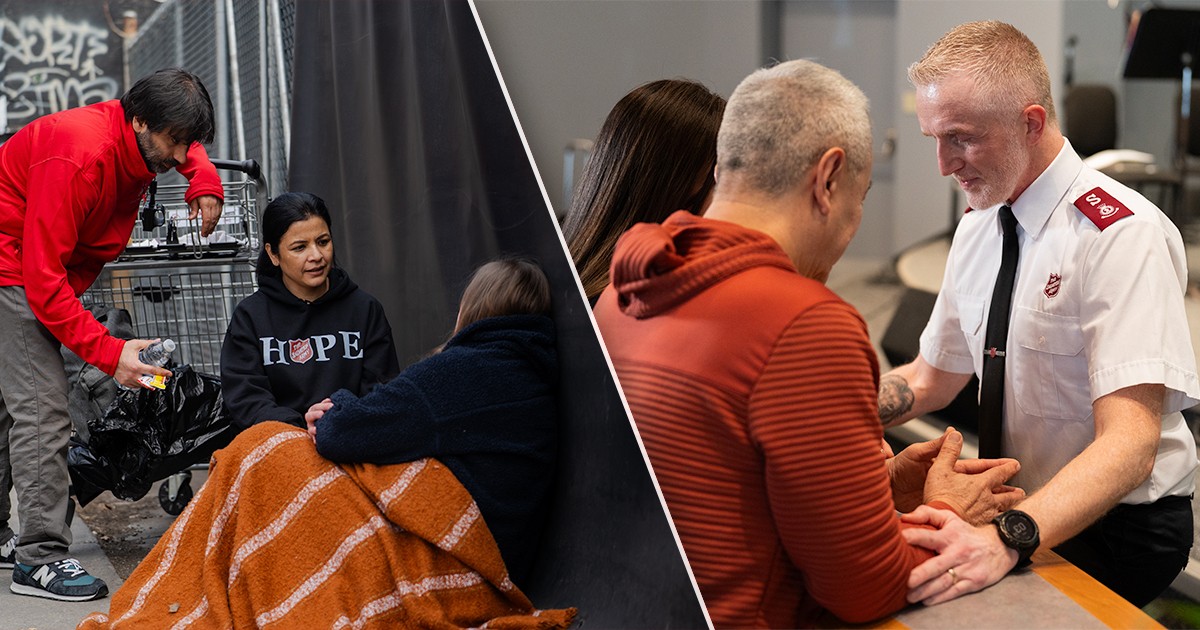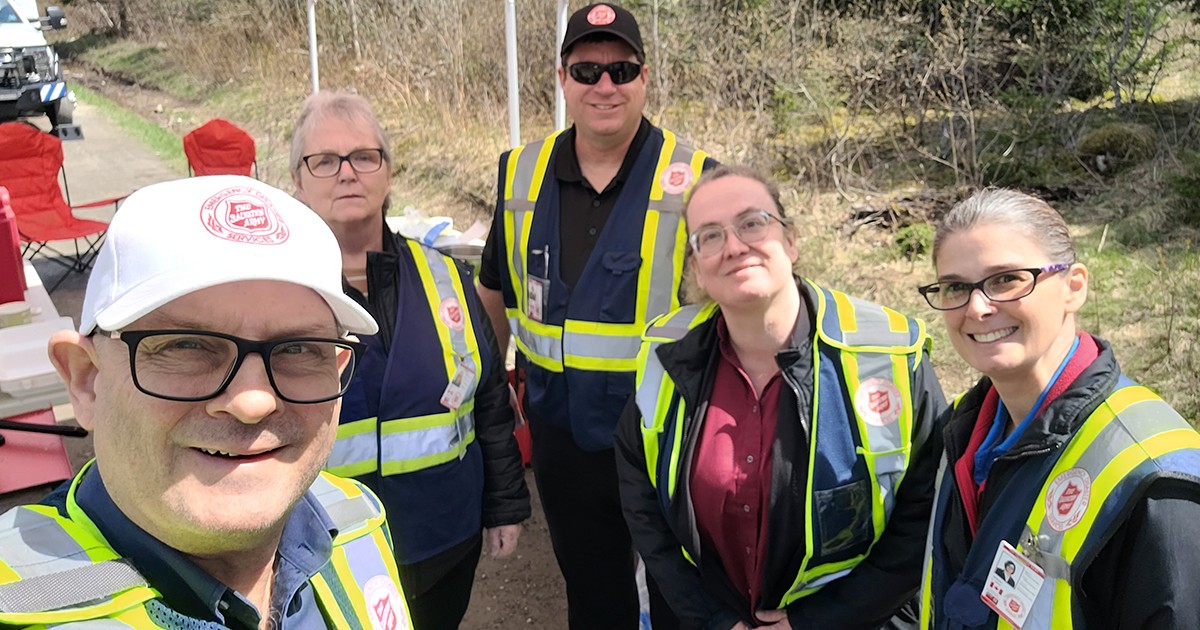Good energy, even dynamism, is often produced between two differing viewpoints. This is a rule of physics, academia, oratory, politics and more. Together the differing perspectives create vibrant tension. Pleasant tension, we might say.
Jazz legend Wynton Marsalis captured this insightfully when he said: “In a strange twist, the way that profound things almost always happen, a thing and the opposite of that thing are matched together.”
Here are 10 “pleasant tensions” matched together in The Salvation Army. Far from being feared or avoided, they give us dynamism.
1. Spiritual and Social
Fiery evangelistic light burned in the heart of William Booth as he stood preaching on the sidewalk outside the Blind Beggar pub on Whitechapel Road in London, England, on July 2, 1865. Days later, it began to catch fire in the revival tent of Mile End Waste—and three months later to move indoors for the first time, to the rented dance hall of New Street.
In 1878, the pure evangelism of the Christian Mission evolved into the wider-ranging mission and outreach of the newly named Salvation Army. Serving humanity through a multitude of socially pragmatic expressions now joined forces with the gospel call to salvation. Service and salvation have remained intertwined in our raison d’etre ever since.
The tension is real. Salvationist leaders wrestle vigorously between the most effective deployment of personnel, funds, property space and time, often counterbalancing spiritual formation and social outreach.
The matter is not as two-dimensional as pitting one concept against the other or even holding the two in balance. Missionally and theologically, the dynamics are inseparable and integrated.
2. Contemporary and Traditional
When the Victorian Salvation Army started joining sacred lyrics to popular music-hall tunes, they can be said to have made the movement contemporary. Here the timeless truths of God and the call of the gospel met the idiom of the day.
That dynamic tension has remained part of the Army ever since—proven church tradition and experimental current mores. And we do it well. Our attire, music, architecture, nomenclature and infrastructure often percolate with both contemporary and traditional elements.
What makes the matter multidimensional is that tradition stands the test of time and is a proven entity, whereas contemporary may well now be fresh, intriguing and connective, but may become suddenly and inexplicably passé. Tradition can be ossified; contemporary can be fickle. Tradition can be profound; contemporary can be brilliant.
Missionally, The Salvation Army integrates both ideas. We are decidedly not Amish or Hasidic, where locking in time is intentionally part of the identity.
3. Reflective and Active
The Salvation Army is rightfully recognized around the world as a movement that gets the job done. Epitomized in the early admonition of the co-Founder, William Booth, to “do something” about the plight of the homeless in Victorian London, The Salvation Army is frequently described in subsequent decades as “Christianity with its sleeves rolled up.”
And yet simultaneously the pioneers of our Army were equally committed, it seems, to quite profound contemplation, reflection and mystery.
The model, of course, is Jesus, who swept into Galilee, and yet also “often withdrew to lonely places and prayed” (Luke 5:16). A characteristic hallmark of the Army at its best will hold those two energies in dynamic tension.
And so, we have retreats and campaigns, meditations and marches, prayer rooms and kettles, and spiritual life development and social service departments. Theologically, we have a connection with the quiet Quakers as well as the rowdy revivalists.
4. Crisis and Process
“Preach for a decision!” So went the clear sermon instruction, imprinted on our hearts and minds as cadets. For an invitation to salvation and a person quickly moving from darkness to light, this can be readily understood. A crisis moment. For an invitation to sanctification, however, and a person quickly moving from salvation to holiness, this is more nuanced. A process over time.
Here we are entering the esoteric world of Wesleyan holiness crisis-process discussion and debate, and it is specifically addressed in The Salvation Army Handbook of Doctrine.
The Salvation Army has contributed to the discourse, with none other than Samuel Brengle championing sanctification more as a crisis moment, and Frederick Coutts emphasizing holiness more as a gradual process. Brengle is the flaming prophet; Coutts is the gentle pastor.
It is important to note that the perspectives are not mutually exclusive; they simply provide a different emphasis, and they are in our midst as a genuine Salvationist tension, a beautiful one.
5. Local and Headquarters
The Salvation Army has had an evolving and bumpy understanding between command headquarters and local units. To what extent could local corps determine their own future and mission?
And yet, this tension is part of the fabric of any human organization, and maybe especially military organizations. Soldiers labouring in trenches bewail the command centre as out-oftouch, while headquarters laments the ineffectiveness of the front line.
Denominationally, The Salvation Army is episcopalian, not congregational. The template is clearly present in the structure of Methodism, our antecedent. We are not like our Reformed colleagues, with autonomous independent congregations bound in a loose affiliation. We are part of an international command structure. Both systems have strengths and vulnerabilities.
Ideally, this is a symbiotic and mutually beneficial relationship. At its best, healthy two-way communication, trust and empowerment create a climate of vibrant understanding and effectiveness. The command centre sees the bigger picture, relates to the macro dynamics, adjusts and charts forward accordingly. Simultaneously, the local unit intimately knows the surrounding terrain with all its subtle influences and neighbourhood jargon, adjusts and charts forward accordingly. Each informs the other.
6. User-Friendly and Quasi-Military
In 1878, when the Christian Mission became The Salvation Army, the dramatic change of name heralded an explosive time of growth and mission. The official history book records: “its destiny was fixed—the whole organization became dominated by the name.”
While quasi-military organization infers accountability, duty, regimen and deportment, our movement simultaneously invites “the whosoever,” and then deploys user-friendly strategy in preaching, music, architecture, public relations and more.
On the one hand, we have a Soldier’s Covenant for membership; on the other, we have only 11 doctrines, collected in an accessible and readable “handbook.”
Understandably, this unique tension sometimes carries with it perplexing moments. Our in-house jargon can often get in the way of effective communication, our denominational expectations can become burdensome, and a two-tier congregational infrastructure can subtly begin to operate with those who are in, and those who are out.
Nevertheless, a God-given Army genius is the healthy and concurrent presence of both an upward call to disciplined spiritual formation and an easy and understandable call for all to join in.
7. Urban and Rural
The earliest days of The Salvation Army were decidedly urban underclass. So much so that when William Booth purchased property in the more prosperous West End of London, he was met with criticism, along the lines of “We are an East End operation.” Booth’s vision was much grander.
A genuine Salvationist dynamic is the missional contrast between congested urban wards and sparse rural settlements. Same Army mission, very different catchment areas.
Historically the urban setting is our more natural habitat. We were born on the crowded city street, so to speak. That imprint is timeless. And yet, when The Salvation Army arrived in small towns, it was a headline event, and some of that potency remains today.
Rural Salvation Army work can be expressed through a depth of close relationships that make for genuine fulfilment. Army personnel can serve the community feeling known and genuinely knowing others. Though likely small in number, we are doggedly persistent and are often a beloved part of town life.
8. Military Discipline and Free Spirit
The theological and operational predecessor of The Salvation Army is Wesleyan Methodism, noted for its scrupulous method and detailed discipline. Add to that inheritance a distinct quasi-military infrastructure, and we have a perfect scenario for Army order and precision.
And yet, as with Methodism, The Salvation Army was born during revival, with spontaneous and unpredictable twists and turns.
This combination of military discipline and free spirit is a fascinating Salvationist dynamic that remains today. The juxtaposition of orders and regulations, standards of meetings and officer appointments coexisting with spontaneous testimony meetings, fluid worship and a high value for unprompted enterprise, makes for vibrant energy.
Truth be told, what appears so free and easy is often the product of intense discipline. Think jazz musicians and ice skaters.
9. Church and Mission
Included in the change of name to The Salvation Army was the significant movement from singular evangelistic mission to broader outreach and denominational self-identity, one with the necessary communities of faith. Bramwell Booth understood this well, evocatively writing in 1903, “Our people will not grow old in holiness unless they are watched over and taught and led.” Very pastoral.
And yet, mission DNA remains indelibly imprinted, stoking our consciousness as a genuine Salvationist dynamic today. We can still chafe at being regarded as a church.
Today, strong and effective expressions of Salvationism could probably stand alone as esteemed parachurch ministries, nonprofit agencies or non-governmental organizations.
Standing alone, however, would surely sap the vitality and vigour of these endeavours. For all its modesty, the heart of our movement is the corps community of faith with its people, worship, prayers, Scripture readings, ceremonies and preaching.
10. Quaker and Pentecostal
In a sweeping description of worship, the writer Frederick Buechner playfully mentions in one sentence the contrasting liturgical styles of “the Quaker Meeting, the Pontifical High Mass, the Family Service, or the Holy Roller Happening.” The Salvation Army could readily fit into three of those styles.
For instance, the affinity between Quakers and Salvationists has been noted since The Salvation Army began. Like the Quakers, Army corps do not formally practise the sacraments, will freely open a meeting for anyone who has “a word,” and will comfortably worship in quietness.
And yet, that same community of faith can just as readily bang a drum, clap hands and shout—sometimes on the same day and sometimes in the same meeting. Historian Diane Winston writes that “early Salvationist services were enthusiastic gatherings which resembled the frenzied fervour of a revival service or a camp meeting. Secular newspapers reported ‘whooping’ and ‘shouting,’ while the War Cry referred to ‘Pentecostal waves’ and ‘showers of fire’ that accompanied a Salvationist Holiness meeting.”
These 10 tensions in The Salvation Army are not “either/or” scenarios—it is the “both/and” that gives us dynamism. Vital, energetic, potent dynamism.
To read the full articles on these 10 “pleasant tensions,” visit saconnects.org/tag/salvationist-dynamics.
Colonel Richard Munn is a retired Salvation Army officer and former director of the International Social Justice Commission. He writes regularly for the U.S.A. Eastern Territory’s SAconnects Good News e-newsletter.
Reprinted with permission from SAconnects.










Leave a Comment